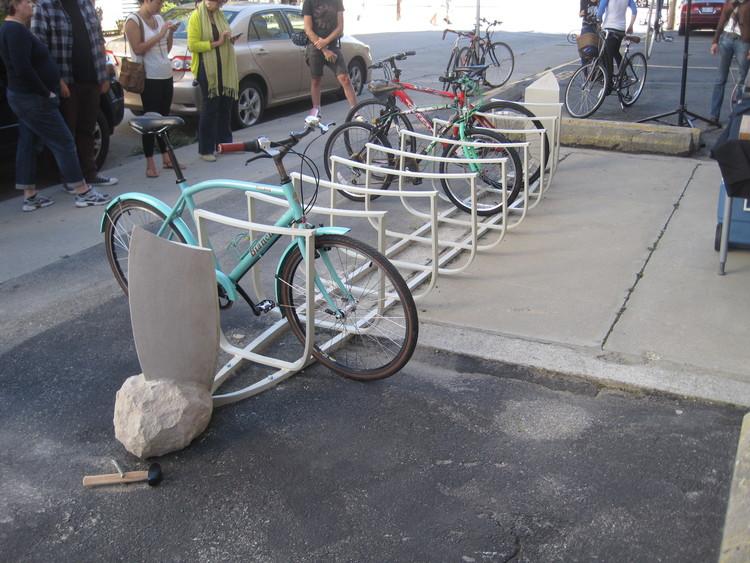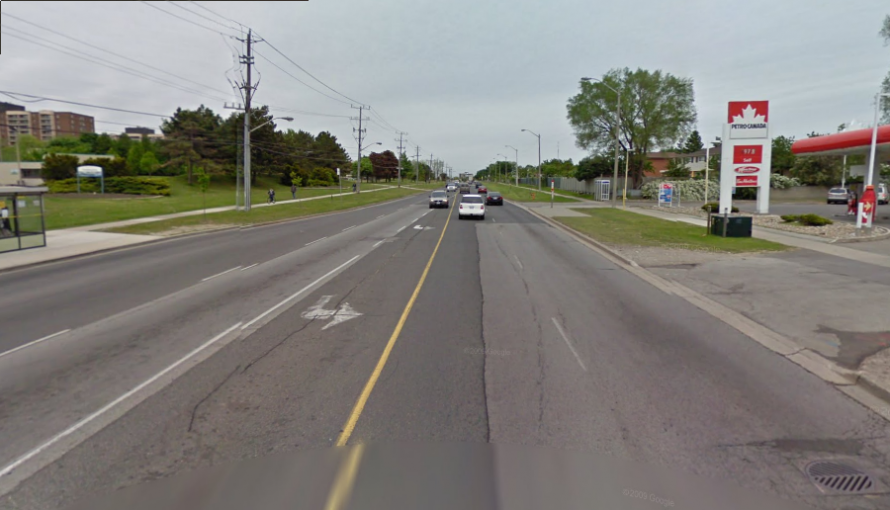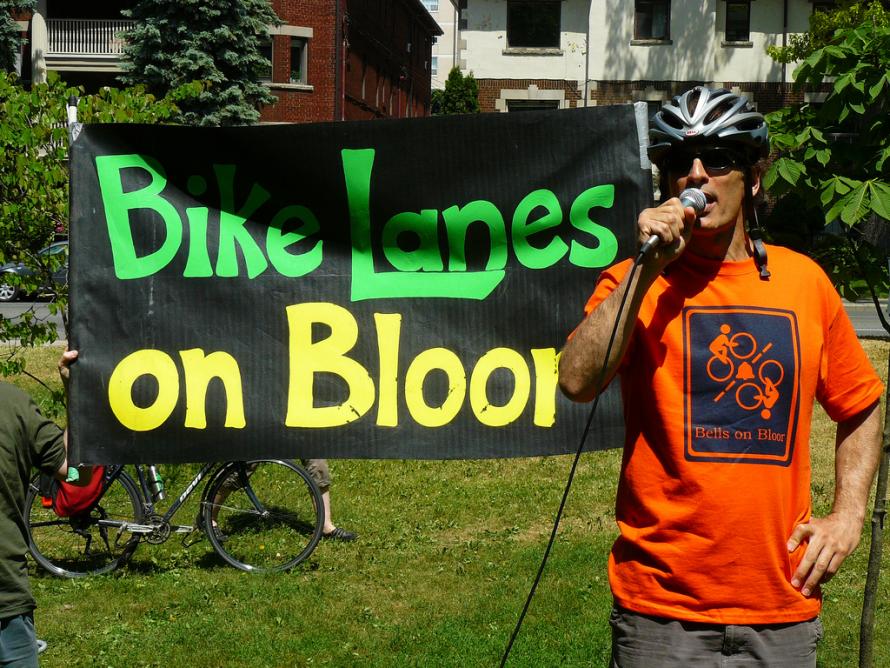So we got the Bloor Environmental Assessment restarted, thanks to the efforts of Albert Koehl, founder of Bells on Bloor, and Cycle Toronto's ward groups along Bloor. There are a couple reasons, however, that make activists believe that the politicians are committed more to the appearance of being progressive rather than actually building bike lanes on Bloor. They can claim a victory that they've restarted a study on the idea of Bloor bike lanes while avoiding the possible repercussions from merchants.
The first reason is that their request for a pilot project was ignored. The lack of a firm commitment to a pilot project has made Koehl cynical about the outcome. Koehl noted to me that some kind of pilot was being discussed behind the scenes but nothing concrete came before the Public Works committee. So we don't have much reason to believe a pilot will happen (though I'll post the info if I find out more).
Running pilot projects has worked wonders for New York where DOT commissioner Janette Sadik-Khan revolutionized bike lane building by quickly building bike lanes that can easily be tweaked (or even removed) later on. A pilot project would provide instant feedback both to planners and to the community. In Toronto, however, councillors were unwilling to take such an important step.
The second reason is that the EA has been crafted so that it will study just the feasibility of bike lanes on Bloor rather than the best way to implement bike lanes. In a normal situation, the workflow would be like this: let's say a nuclear power plant is proposed to be built by the government. An environmental assessment kicks in by law to help guide the process of how it will be built, understand the negative effects and how to mitigate them. But the Bloor EA is being done ahead of any commitment to Bloor bike lanes. Councillors have not committed to building a bike lane on Bloor, just the feasibility.
And even more annoying is that the EA is not required by law for a bike lane. Recall that the City has happily built all of our other bike lanes without an EA (except for Richmond and Adelaide). An EA makes bike lanes look expensive.
Compare this to the Richmond-Adelaide EA. Here City Council had already voted to build bike lanes and the EA exists to help build it.
We can blame former Mayor Miller for starting this EA treadmill. The Bloor EA provided some cover to show that he was doing something for cyclists rather than show results. It wasn't a commitment to build anything then it was cancelled by Mayor Ford.
It would be easy to just give up at this point, but I suggest that we hold the feet of our politicians to the fire, whether they be progressive or not. Let's build what is possible now (Harbord, Wellesley, Richmond, Adelaide) and push the Bloor councillors to make an actual commitment to a pilot on Bloor.



